Wisconsin Fruit Crop Scouting Report: August 13, 2025
Hello fruit growers, we are excited to share apple and grape scouting updates with you this year through the Wisconsin Fruit Newsletter. Rain continues to be persistent, with extreme, heavy rain events documented across much of southern WI between August 9 and 11. Growers may consider reviewing food safety protocols and root rot identification/management if flooding impacted your fruit crops: Food safety for flooded fruit and vegetable fields (University of Minnesota), Rainfall and Root Rot Management in Commercial Fruit Production (University of Connecticut). The warm, humid and wet conditions continue to be ideal for typical summer diseases in apples and grapes. As a reminder, this newsletter will cover apple and grape phenology, general scouting observations, and includes an overview of degree day accumulation. Growers can reference the Midwest Fruit Pest Management guide for further information on pest management best practices, including recommended chemical best practices.
Grapes
Phenology
At the West Madison Agricultural Research Station (WMARS) in Madison, WI, fruit average around E-L* stage 34 (Berries begin to soften, sugar starts increasing) on Petite Pearl and La Crescent to E-L stage 36 (Berries with intermediate sugar values) in Brianna, Frontenac and Marquette. At the Peninsular Agricultural Research Station (PARS) in Sturgeon Bay, WI, fruit average around E-L* stage 34 in Itasca to E-L stage 33 in Marquette.
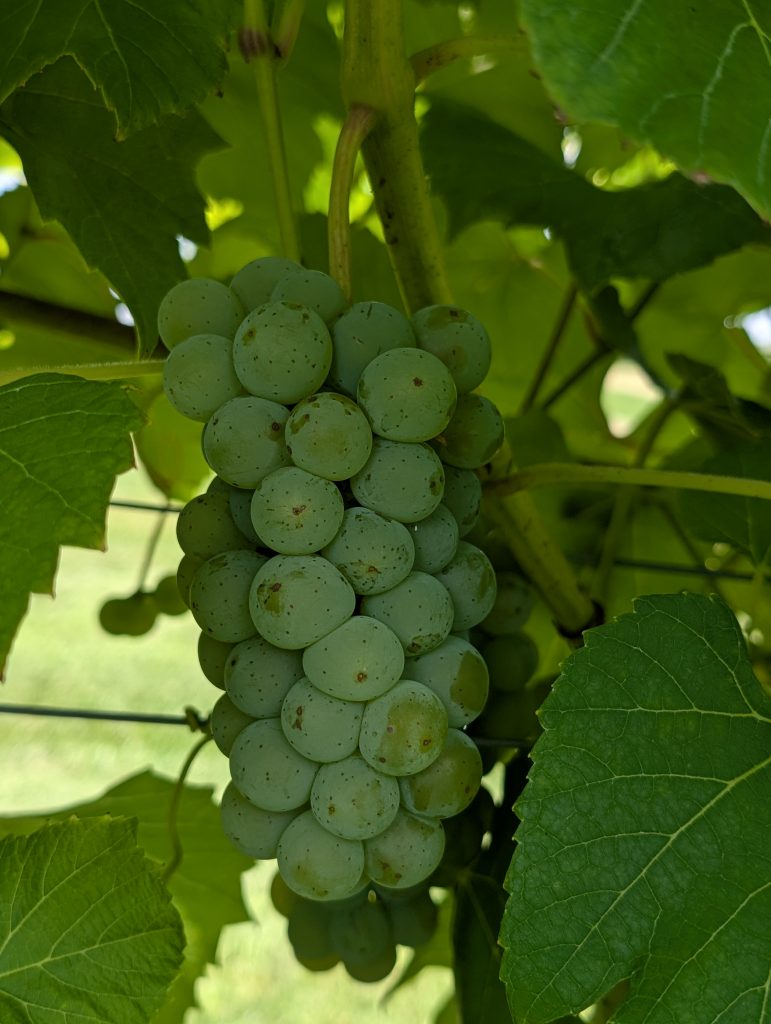
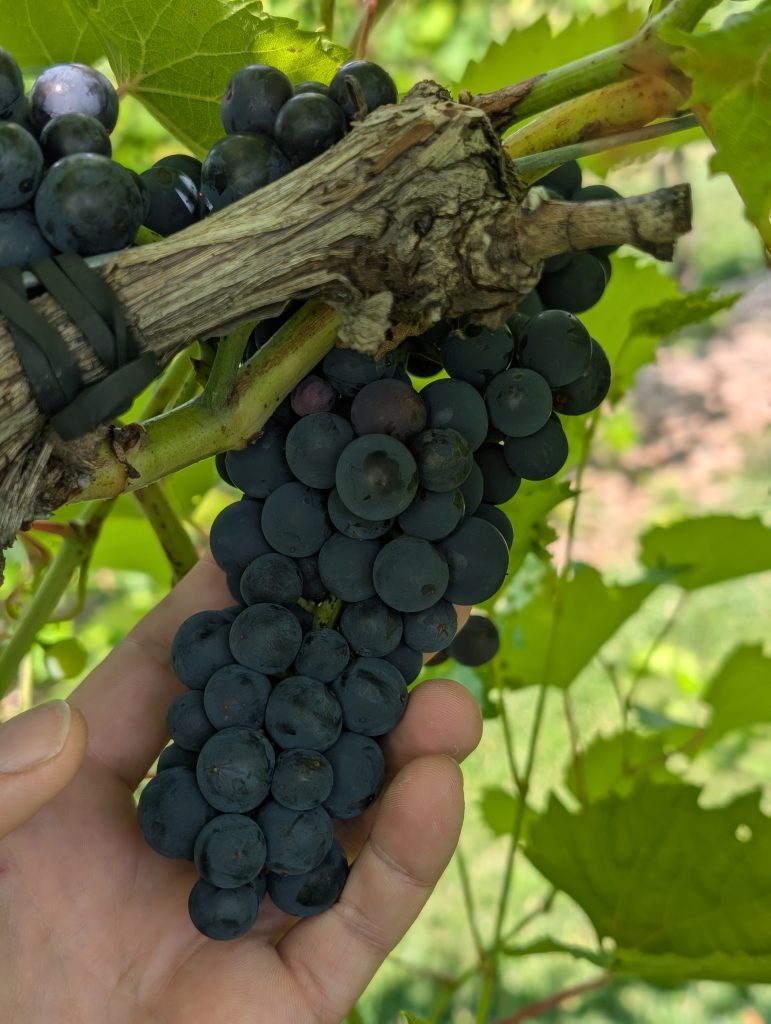
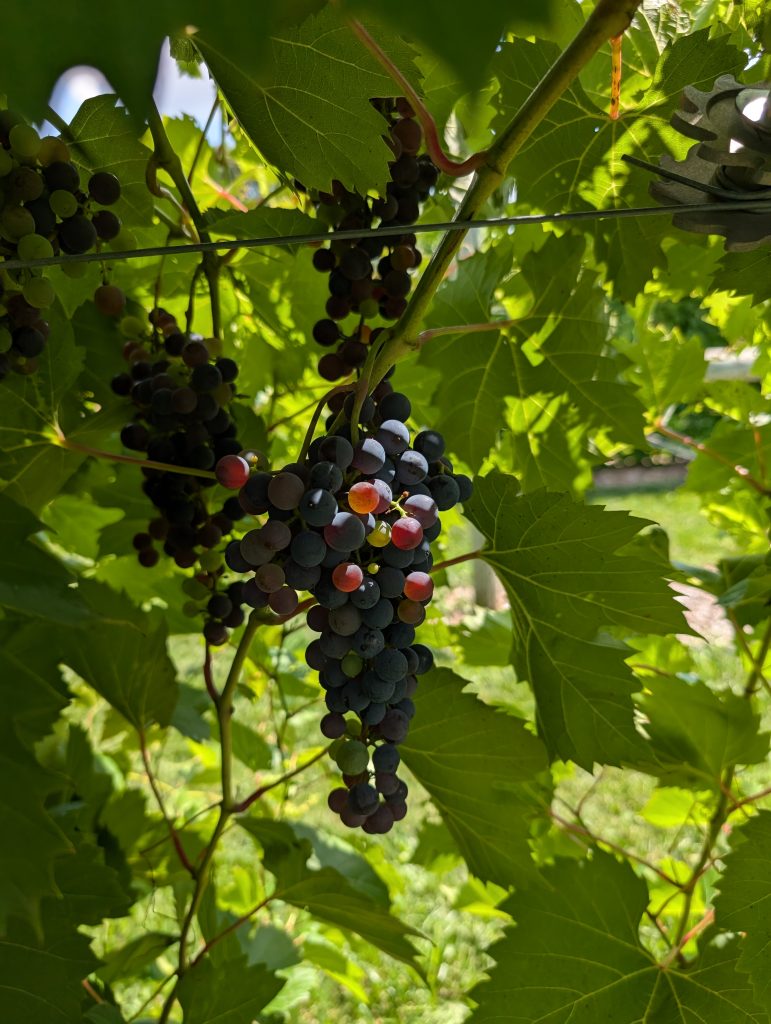
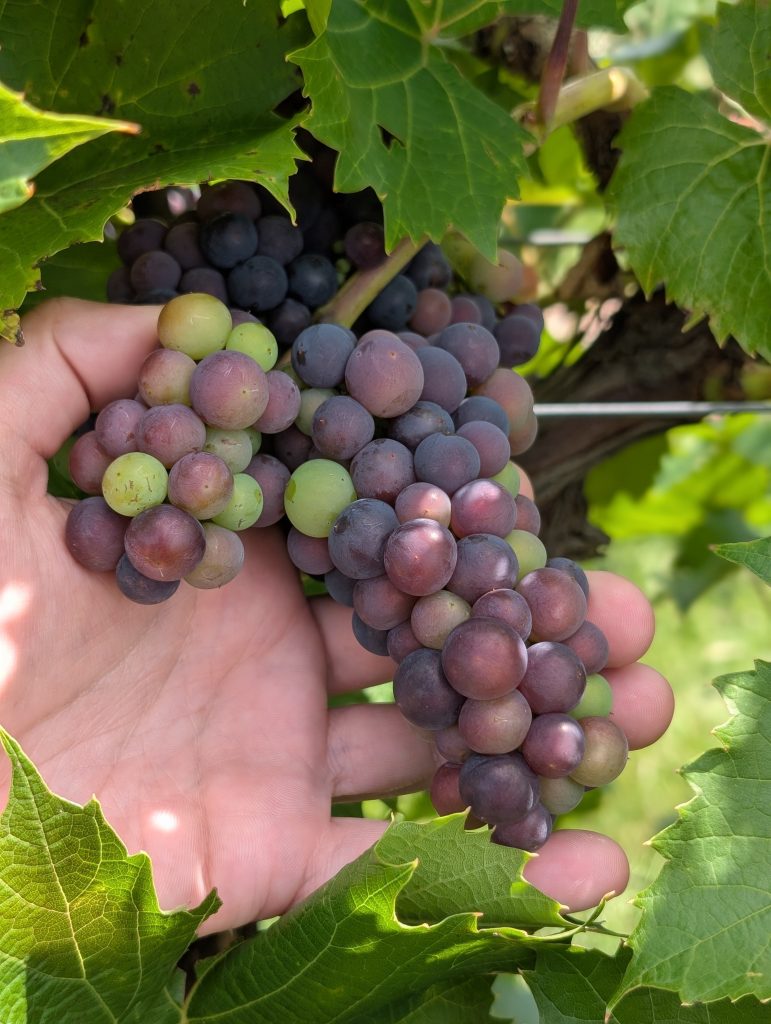
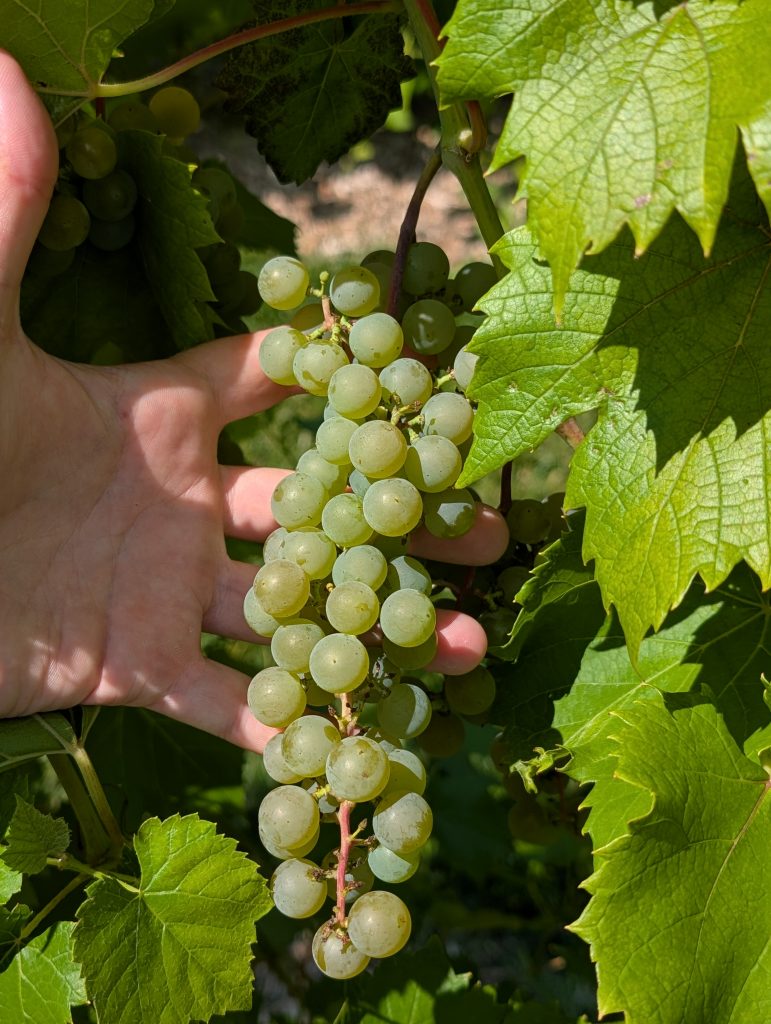
*E-L stands for Eichhorn-Lorenz growth stages scale to describe grapevine development.
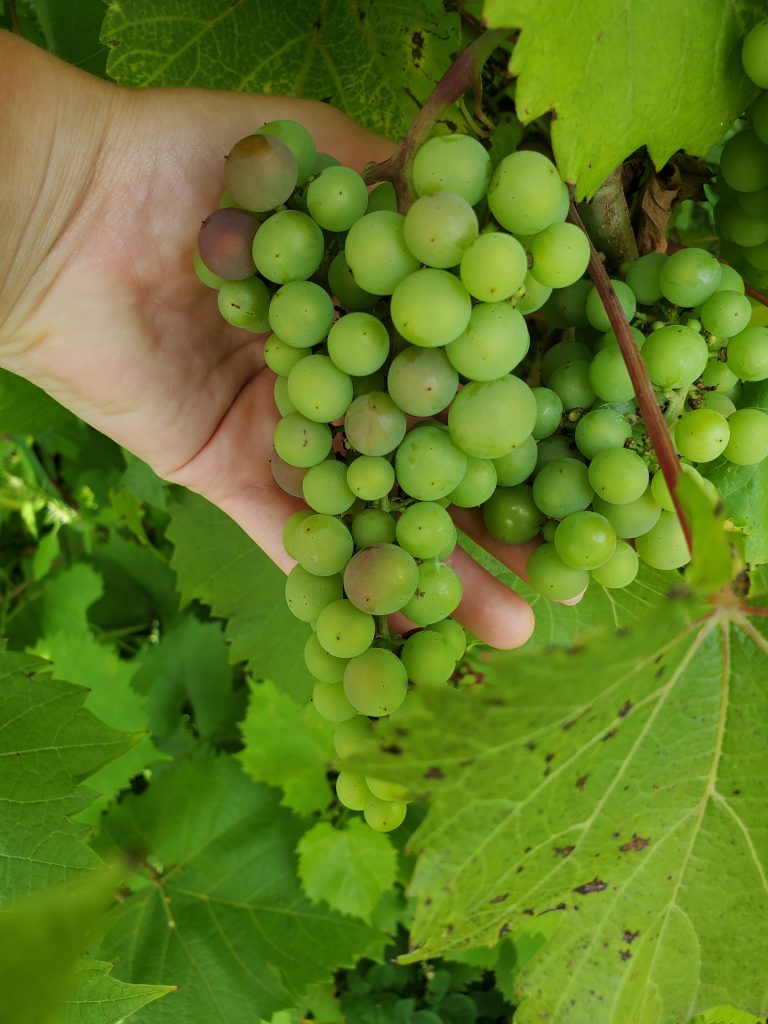
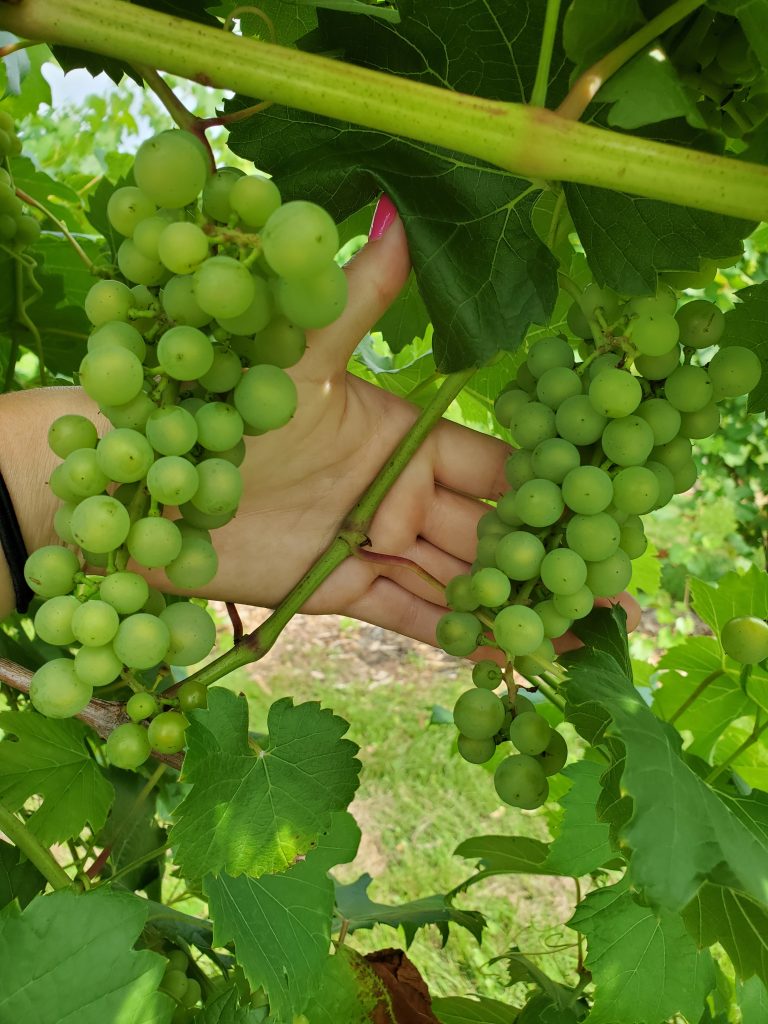
*E-L stands for Eichhorn-Lorenz growth stages scale to describe grapevine development.
Growing Degree Day (GDD) Accumulations
Below displays the GDD accumulations from April 1 through August 13 for the current and last two seasons. This data is collected using the NEWA website. You can visit their “About degree days” page to learn more about the concept of degree days as well as the formulas utilized for calculations.
Growing degree day (GDD) accumulation as of August 13 (April 1 start date; base 50°F BE*) at the WMARS and PARS.
| Location | 2025 | 2024 | 2023 |
| Verona WMARS | 1980 | 1951 | 2016 |
| Sturgeon Bay PARS | 1542 | 1481 | 1577 |
*BE = Baskerville-Emin calculation method
Pests and other considerations
- Grape phomopsis and black rot continues to be observed in West Madison. Black rot fruit infections have been reported across much of Wisconsin. Black rot fruit infections will eventually shrivel into a blue/black hardened fruit “mummy”.
- Growers should keep an eye out for sour rot and botrytis bunch rot, especially around veraison. Check out last week’s article on summer fruit rots.
- Spotted wing drosophila has been observed at West Madison. Continue monitoring traps and using NEWA models.
- Sap beetles have been observed feeding on over ripe and damaged fruit. Review best management practices here.
- Grape berry moth injury has been observed at West Madison and in Southern WI. Growers may consider using monitoring traps to determine population pressure and/or time management decisions.
- Overview of grape insect/mite monitoring and management: Grape Insects and Mite Pests, 2024 Field Season (Cornell, 2024).
- Sanitation: remove and destroy (chop/compost) fallen fruit ~weekly to prevent any internally developing larvae from reaching maturity, and to limit the spread of disease.
- Wisconsin fruit growers can reference the Midwest Fruit Pest Management Guide (MFPMG) for a list of registered products and recommended best practices. View the MFPMG Online or order a hard copy here: MFPMG Hard Copy.
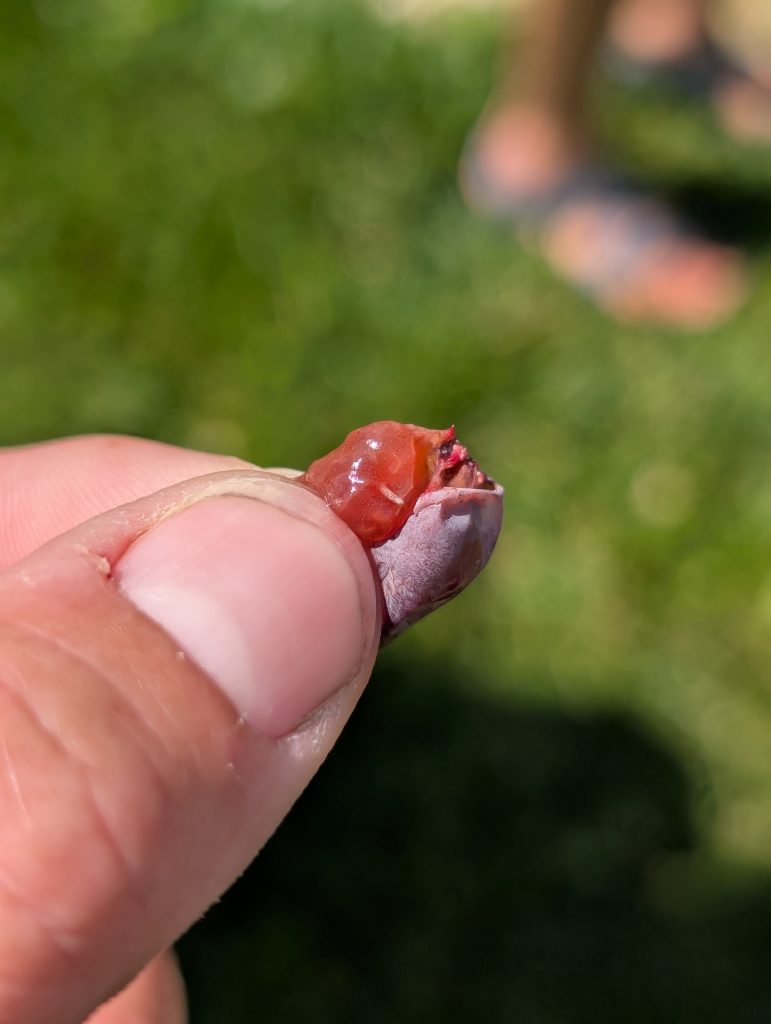
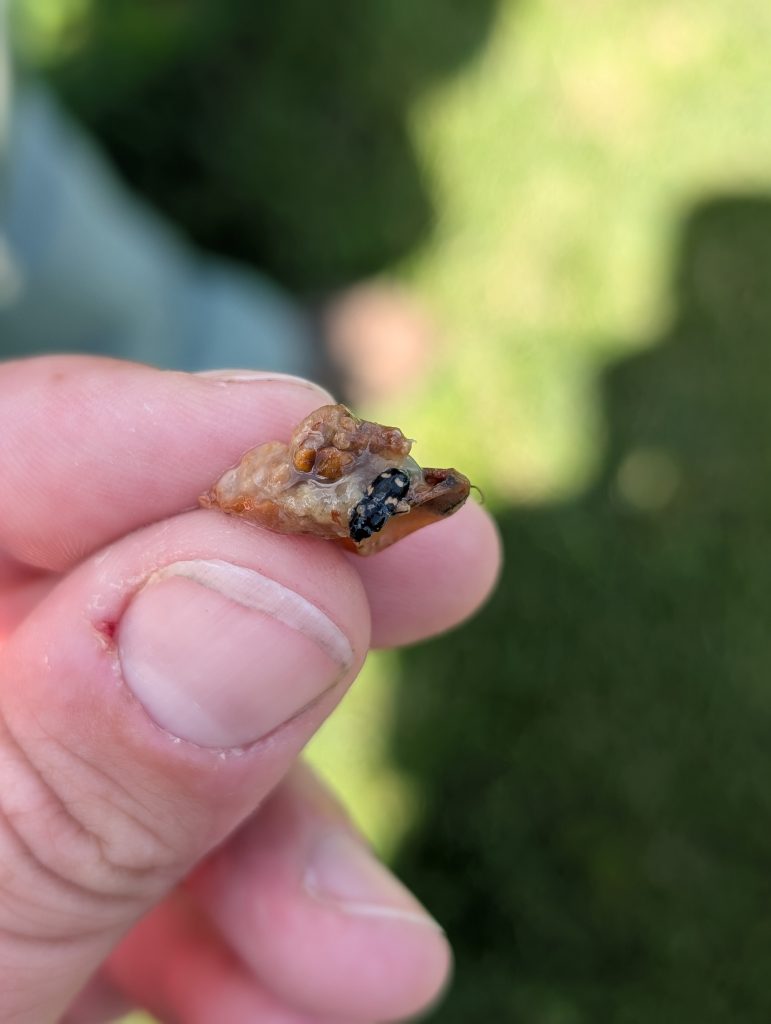
Apples
Phenology
In southern Wisconsin, some grower are just completing a first color pick in Zestar!. Zestar! is typically harvested in mid to late-August and Honeycrisp first picking typically occurs in early-September.
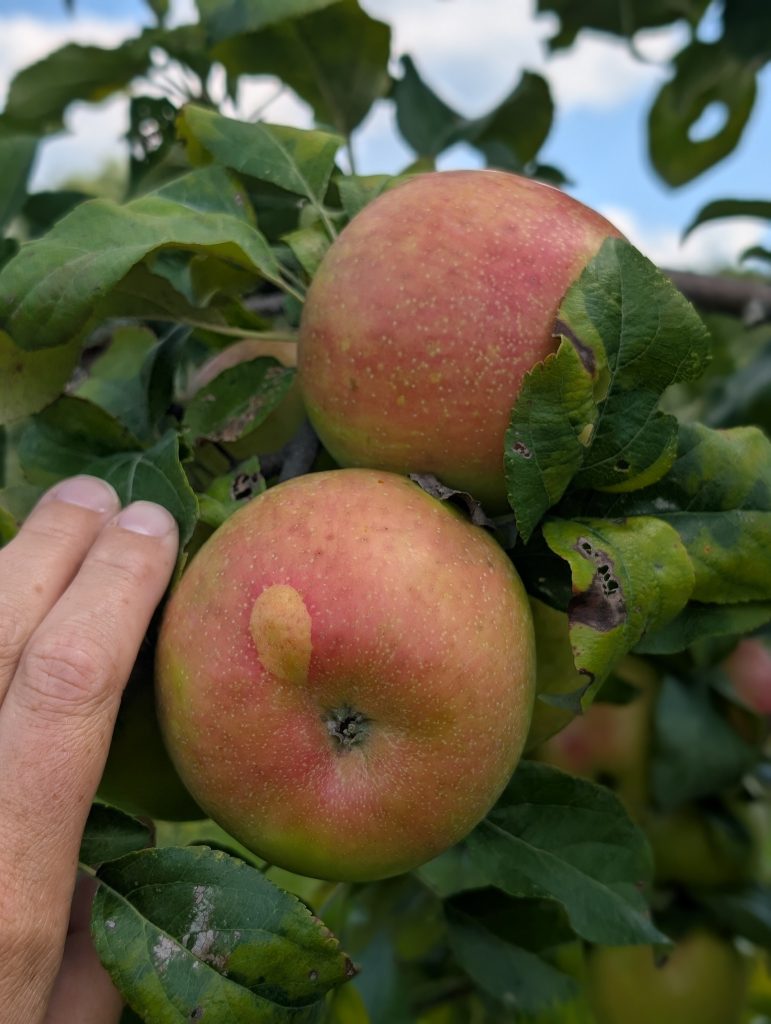
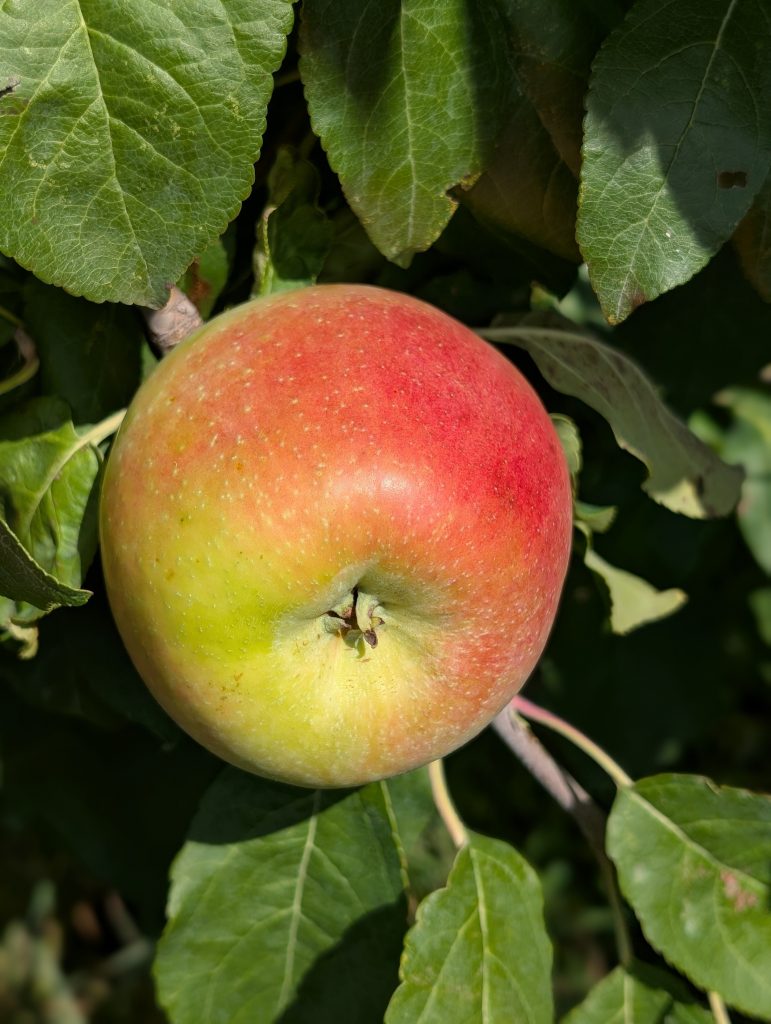
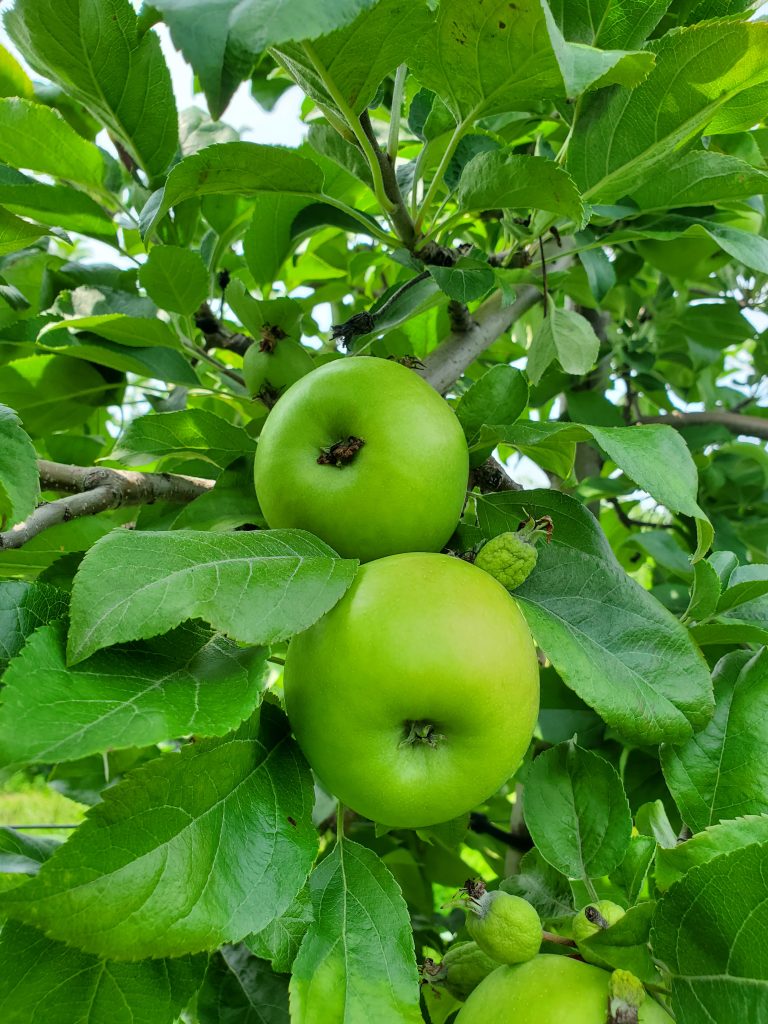
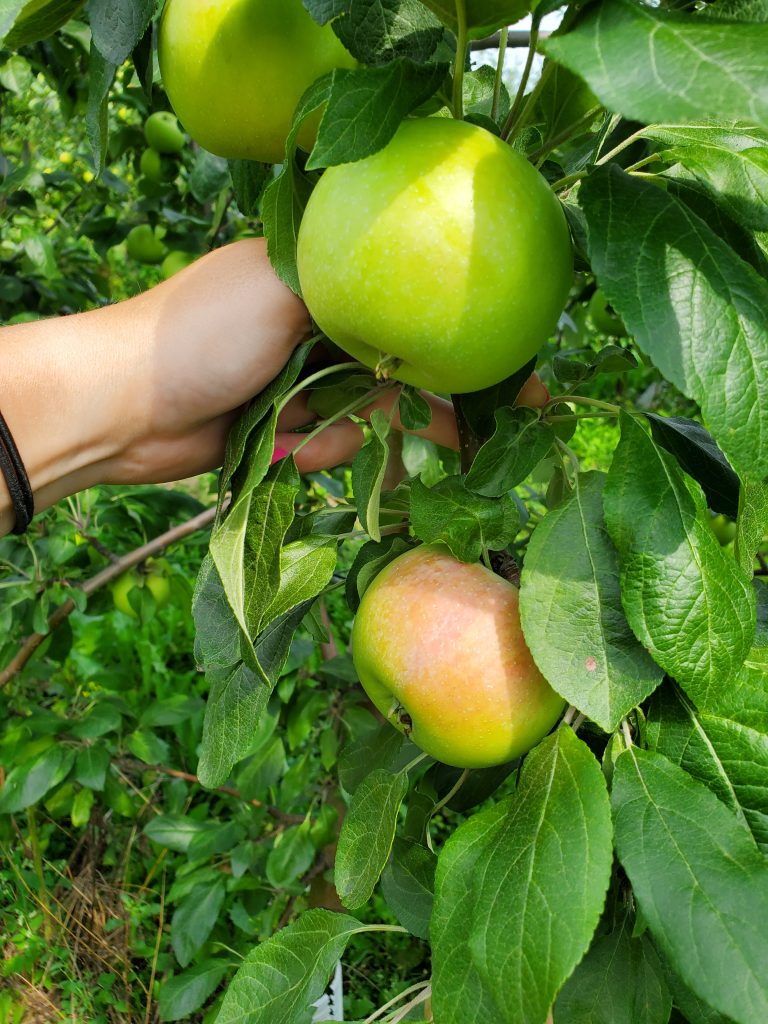
Growing Degree Day (GDD) Accumulations
We are tracking growing degree days (DD 43 °F BE) from January 1 to monitor bud development in apples. This data is collected using the NEWA website. You can visit their “About degree days” page to learn more about the concept of degree days as well as the formulas utilized for calculations. Growing degree day (GDD) accumulation in 2023, 2024 and 2025 as of August 13 (January 1 start date; base 43°F BE*).
| Location | 2025 | 2024 | 2023 |
| Verona WMARS | 2899 | 2926 | 2836 |
| Gays Mills | 2898 | 2880 | 2823 |
| Eau Claire | 2697 | 2590 | 2668 |
| Door County PARS | 2259 | 2323 | 2323 |
| Fond Du Lac | 2642 | 2864 | 2782 |
| Racine | 2754 | 3008 | 2696 |
*BE = Baskerville-Emin calculation method
Other considerations:
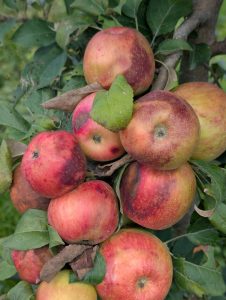
- Continue monitoring pheromone traps for any spikes in second generation codling moth. Continue to keep an eye on degree-day accumulation in your area.
- Apple maggot will emerge through September. Growers should continue using red sphere traps to monitor population levels and time management decisions.
- Check out the WI DATCP Orchard Insect Pest Bulletin for more information on current insect trap captures across the state.
- Need insect scouting supplies, lures or traps? Place your order here: Great Lakes IPM
- Warm and rainy weather continues to push along bitter rot in some orchards; see the article on bitter rot management from the July 4 newsletter.
- Powdery mildew has been observed in orchards in southern WI. Review best management practices from the June 5th newsletter here: Powdery mildew.
- Sooty blotch and flyspeck has been observed in Southern WI, pushed along by warm, humid conditions. Continue monitoring NEWA models and scout susceptible varieties.
- Sun scald and southwest injury to trunks and branches has been observed across many orchards and vineyards this summer, likely due to wide variations in winter temperatures that can cause trunk and branch damage.
- Fruit sunburn has been observed across many fruit crops in southern WI. Consider removing this fruit while out picking to prevent other pests attracted to the volatiles released from impacting fruit.
- Bitter pit and cork spot have been observed in southern Wisconsin, driven by high moisture levels. Review best management practices here.
That’s all for this week – good luck to all WI Fruit Growers!
This article was posted in Apples, Disease, Grapes, Insects and tagged Amaya Atucha, Apples, Courtney Meeks, disease, gdd, Grapes, growing degree day accumulations, Growing Degree Days, insects, Josie Dillon, Leslie Holland, pests, phenology, Wisconsin Fruit Crop Scouting Report.
